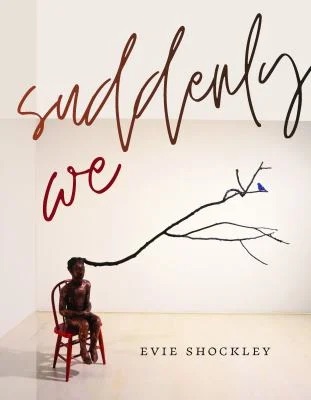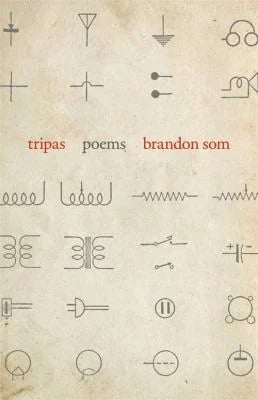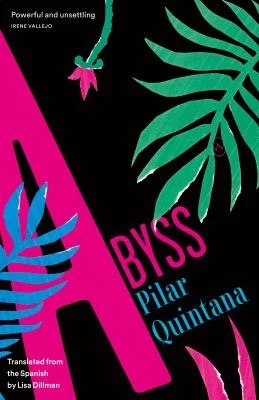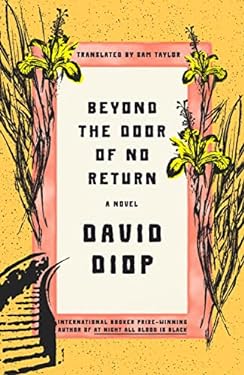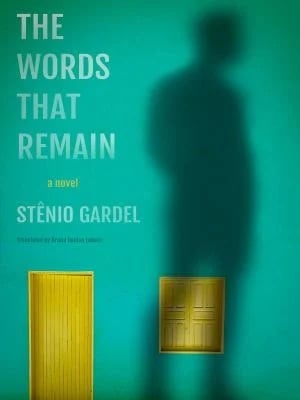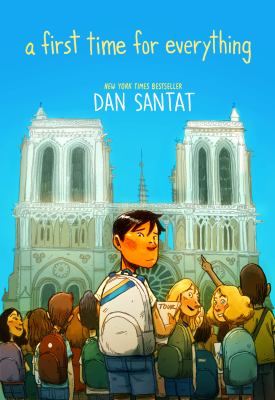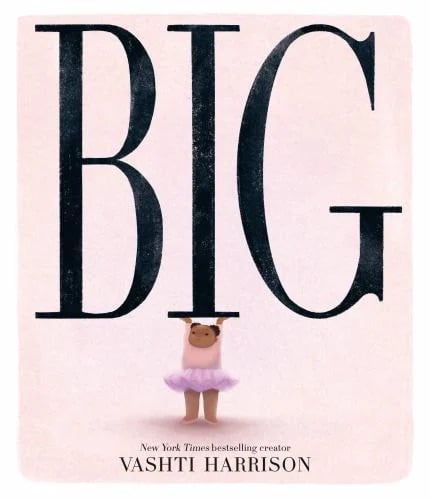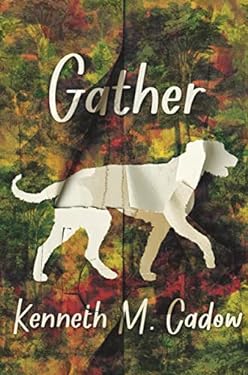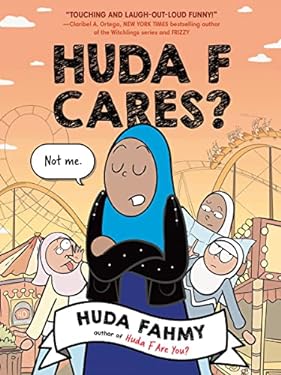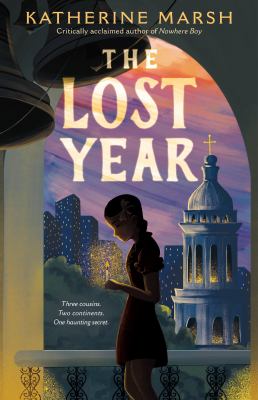Finalists for the 2023 National Book Awards categories have been announced! Find all 25 books recognized in this years’ awards by category below, from nonfiction to young adult reads, and follow the link to pick up your own copy. How many of these titles have you read?

Fiction
Blackouts : A Novel
by Justin Torres
Out in the desert in a place called the Palace, a young man tends to a dying soul, someone he once knew briefly, but who has haunted the edges of his life. Juan Gay–playful raconteur, child lost and found and lost, guardian of the institutionalized–has a project to pass along to this new narrator. It is inspired by a true artifact of a book, Sex Variants: A Study in Homosexual Patterns , which contains stories collected in the early twentieth century from queer subjects by a queer researcher, Jan Gay, whose groundbreaking work was then co-opted by a committee, her name buried. As Juan waits for his end, he and the narrator trade stories–moments of joy and oblivion–and resurrect lost loves, lives, mothers, fathers, minor heroes. The past is with us, beside us, ahead of us; what are we to create from its gaps and erasures? Inspired by Kiss of the Spider Woman , Pedro Páramo , Voodoo Macbeth , the book at its own center and the woman who created it, oral histories, and many more texts, images, and influences, Justin Torres’s Blackouts is a work of fiction that sees through the inventions of history and narrative.
.
Chain Gang All Stars : A Novel
by Nana Kwame Adjei-Brenyah
She felt their eyes, all those executioners… Loretta Thurwar and Hamara “Hurricane Staxxx” Stacker are the stars of Chain-Gang All-Stars, the cornerstone of CAPE, or Criminal Action Penal Entertainment, a highly-popular, highly-controversial, profit-raising program in America’s increasingly dominant private prison industry. It’s the return of the gladiators and prisoners are competing for the ultimate prize: their freedom. In CAPE, prisoners travel as Links in Chain-Gangs, competing in death-matches for packed arenas with righteous protestors at the gates. Thurwar and Staxxx, both teammates and lovers, are the fan favorites. And if all goes well, Thurwar will be free in just a few matches, a fact she carries as heavily as her lethal hammer. As she prepares to leave her fellow Links, she considers how she might help preserve their humanity, in defiance of these so-called games, but CAPE’s corporate owners will stop at nothing to protect their status quo and the obstacles they lay in Thurwar’s path have devastating consequences.
.
The ten stories in this collection contribute to the bounty of diverse narratives about Black life by intimately portraying the experiences of a community that resists the mainstream culture to which they are expected to accept and aspire to while functioning within the country in which they are born. In “Due North,” an obedient daughter struggles to understand why she’s haunted by the spirit of her recently deceased father. In “Who’s Down?” a father, after a brief affair with vegetarianism, conspires with his daughter to order him a double cheeseburger. In “Candy for Hanif” a mother’s routine trip to the store for her disabled son takes an unlikely turn when she reflects on a near-death experience. In “Woman in Niqab,” a daughter’s suspicion of her father’s infidelity prompts her to wear her hair in public. In “New Mexico,” a federal agent tasked with spying on a high-ranking member of the Nation of Islam grapples with his responsibilities closer to home. With an unflinching eye for the contradictions between what these characters profess to believe and what they do, Temple Folk accomplishes the rare feat of presenting moral failures with compassion, nuance and humor to remind us that while perfection is what many of us strive for, it’s the errors that make us human.
.
The End of Drum-Time : A Novel
by Hanna Pylväinen
In 1851, at a remote village in the Scandinavian tundra, a Lutheran minister known as Mad Lasse tries in vain to convert the native Sámi reindeer herders to his faith. But when one of the most respected herders has a dramatic awakening and dedicates his life to the church, his impetuous son, Ivvár, is left to guard their diminishing herd alone. By chance, he meets Mad Lasse’s daughter Willa, and their blossoming infatuation grows into something that ultimately crosses borders–of cultures, of beliefs, and of political divides–as Willa follows the herders on their arduous annual migration north to the sea. Gorgeously written and sweeping in scope, Hanna Pylväinen’s The End of Drum-Time immerses readers in a world lit by the northern lights, steeped in age-old rituals, and guided by passions that transcend place and time.
.
This Other Eden : a Novel
by Paul Harding
In 1792, formerly enslaved Benjamin Honey and his Irish wife, Patience, discover an island where they can make a life together. Over a century later, the Honeys’ descendants and a diverse group of neighbors are desperately poor, isolated, and often hungry, but nevertheless protected from the hostility awaiting them on the mainland. During the tumultuous summer of 1912, Matthew Diamond, a retired, idealistic but prejudiced schoolteacher-turned-missionary, disrupts the community’s fragile balance through his efforts to educate its children. His presence attracts the attention of authorities on the mainland who, under the influence of the eugenics-thinking popular among progressives of the day, decide to forcibly evacuate the island, institutionalize its residents, and develop the island as a vacation destination. Beginning with a hurricane flood reminiscent of the story of Noah’s Ark, the novel ends with yet another Ark. In prose of breathtaking beauty and power, Paul Harding brings to life an unforgettable cast of characters: Iris and Violet McDermott, sisters raising three orphaned Penobscot children; Theophilus and Candace Larks and their brood of vagabond children; the prophetic Zachary Hand to God Proverbs, a Civil War veteran who lives in a hollow tree; and more. A spellbinding story of resistance and survival, This Other Eden is an enduring testament to the struggle to preserve human dignity in the face of intolerance and injustice.
.
Nonfiction
Fire Weather : A True Story from a Hotter World
by John Vaillant
In May 2016, Fort McMurray, the hub of Canada’s oil industry and America’s biggest foreign supplier, was overrun by wildfire. The multi-billion-dollar disaster melted vehicles, turned entire neighborhoods into firebombs, and drove 88,000 people from their homes in a single afternoon. Through the lens of this apocalyptic conflagration–the wildfire equivalent of Hurricane Katrina–John Vaillant warns that this was not a unique event, but a shocking preview of what we must prepare for in a hotter, more flammable world. Fire has been a partner in our evolution for hundreds of millennia, shaping culture, civilization, and, very likely, our brains. Fire has enabled us to cook our food, defend and heat our homes, and power the machines that drive our titanic economy. Yet this volatile energy source has always threatened to elude our control, and in our new age of intensifying climate change, we are seeing its destructive power unleashed in previously unimaginable ways. With masterly prose and a cinematic eye, Vaillant takes us on a riveting journey through the intertwined histories of North America’s oil industry and the birth of climate science, to the unprecedented devastation wrought by modern forest fires, and into lives forever changed by these disasters. John Vaillant’s urgent work is a book for–and from–our new century of fire, which has only just begun.
.
Liliana’s Invincible Summer : A Sister’s Search for Justice
by Cristina Rivera Garza
I seek justice, I finally said. I seek justice for my sister. . . . Sometimes it takes twenty-nine years to say it out loud, to say it out loud on a phone call with a lawyer at the General Attorney’s office: I seek justice. September 2019. Cristina Rivera Garza travels from her home in Texas to Mexico City, in search of an old, unresolved criminal file. “My name is Cristina Rivera Garza,” she wrote in her request to the attorney general, “and I am writing to you as a relative of Liliana Rivera Garza, who was murdered on July 16, 1990.” It’s been twenty-nine years. Twenty-nine years, three months, and two days since Liliana was murdered by an abusive ex-boyfriend–and Cristina knows there is only a slim chance of recovering the file. And yet, inspired by feminist movements across the world and enraged by the global epidemic of femicide and intimate partner violence, she embarks on a path toward justice. Liliana’s Invincible Summer is the account–and the outcome–of that extraordinary quest. In luminous, poetic prose, Rivera Garza tells a singular yet universally resonant story: that of a spirited, wondrously hopeful young woman who tried to survive in a world of increasingly normalized gendered violence. Following her decision to recover her sister’s file, Rivera Garza traces the history of Liliana’s life, from her early romance with a handsome but possessive and short-tempered man, to that exhilarating final summer of 1990 when Liliana loved, thought, and traveled more widely and freely than she ever had before. Using her remarkable talents as an acclaimed scholar, novelist, and poet, Rivera Garza collected and curated evidence–handwritten letters, police reports, school notebooks, interviews with Liliana’s loved ones–to render and understand a life beyond the crime itself.
.
Ordinary Notes
by Christina Sharpe
A singular achievement, Ordinary Notes explores profound questions about loss and the shapes of Black life that emerge in the wake. In a series of 248 notes that gather meaning as we read them, Christina Sharpe skillfully weaves artifacts from the past–public ones alongside others that are poignantly personal–with present realities and possible futures, intricately constructing an immersive portrait of everyday Black existence. The themes and tones that echo through these pages, sometimes about language, beauty, memory; sometimes about history, art, photography, and literature–always attend, with exquisite care, to the ordinary-extraordinary dimensions of Black life. At the heart of Ordinary Notes is the indelible presence of the author’s mother, Ida Wright Sharpe. “I learned to see in my mother’s house,” writes Sharpe. “I learned how not to see in my mother’s house . . . My mother gifted me a love of beauty, a love of words.” Using these gifts and other ways of seeing, Sharpe steadily summons a chorus of voices and experiences to the page. She practices an aesthetic of “beauty as a method,” collects entries from a community of thinkers toward a “Dictionary of Untranslatable Blackness,” and rigorously examines sites of memory and memorial. And in the process, she forges a brilliant new literary form, as multivalent as the ways of Black being it traces.
.
The Rediscovery of America : Native Peoples and the Unmaking of U. S. History
by Ned Blackhawk
A sweeping and overdue retelling of U.S. history that recognizes that Native Americans are essential to understanding the evolution of modern America The most enduring feature of U.S. history is the presence of Native Americans, yet most histories focus on Europeans and their descendants. This long practice of ignoring Indigenous history is changing, however, with a new generation of scholars insists that any full American history address the struggle, survival, and resurgence of American Indian nations. Indigenous history is essential to understanding the evolution of modern America. Ned Blackhawk interweaves five centuries of Native and nonNative histories, from Spanish colonial exploration to the rise of Native American self-determination in the late twentieth century. In this transformative synthesis he shows that * European colonization in the 1600s was never a predetermined success; * Native nations helped shape England’s crisis of empire; * the first shots of the American Revolution were prompted by Indian affairs in the interior; * California Indians targeted by federally funded militias were among the first casualties of the Civil War; * the Union victory forever recalibrated Native communities across the West; * twentieth-century reservation activists refashioned American law and policy. Blackhawk’s retelling of U.S. history acknowledges the enduring power, agency, and survival of Indigenous peoples, yielding a truer account of the United States and revealing anew the varied meanings of America.
.
We Could Have Been Friends, My Father and I : A Palestinian Memoir
by Raja Shehadeh
A subtle psychological portrait of the author’s relationship with his father during the twentieth-century battle for Palestinian human rights. Aziz Shehadeh was many things: lawyer, activist, and political detainee, he was also the father of bestselling author and activist Raja. In this new and searingly personal memoir, Raja Shehadeh unpicks the snags and complexities of their relationship. A vocal and fearless opponent, Aziz resists under the British mandatory period, then under Jordan, and, finally, under Israel. As a young man, Raja fails to recognize his father’s courage and, in turn, his father does not appreciate Raja’s own efforts in campaigning for Palestinian human rights. When Aziz is murdered in 1985, it changes Raja irrevocably. This is not only the story of the battle against the various oppressors of the Palestinians, but a moving portrait of a particular father and son relationship.
.
Poetry
From From : Poems
by Monica Youn
“Where are you from . . . ? No–where are you from from?” It’s a question every Asian American gets asked as part of an incessant chorus saying you’ll never belong here, you’re a perpetual foreigner, you’ll always be seen as an alien, an object, or a threat. Monica Youn’s From From brilliantly evokes the conflicted consciousness of deracination. If you have no core of “authenticity,” no experience of your so-called homeland, how do you piece together an Asian American identity out of Westerners’ ideas about Asians? Your sense of yourself is part stereotype, part aspiration, part guilt. In this dazzling collection, one sequence deconstructs the sounds and letters of the word “deracinations” to create a sonic landscape of micro- and macroaggressions, assimilation, and self-doubt. A kaleidoscopic personal essay explores the racial positioning of Asian Americans and the epidemic of anti-Asian hate. Several poems titled “Study of Two Figures” anatomize and dissect the Asian other: Midas the striving, nouveau-riche father; Dr. Seuss and the imaginary daughter Chrysanthemum-Pearl he invented while authoring his anti-Japanese propaganda campaign; Pasiphaë, mother of the minotaur, and Sado, the eighteenth-century Korean prince, both condemned to containers allegorical and actual.
.
From Unincorporated Territory [åmot]
by Craig Santos Perez
Experimental and visual poems diving into the history and culture of the poet’s homeland, Guam. This book is the fifth collection in Craig Santos Perez’s ongoing from unincorporated territory series about the history of his homeland, the western Pacific island of Guåhan (Guam), and the culture of his indigenous Chamoru people. “Åmot” is the Chamoru word for “medicine,” commonly referring to medicinal plants. Traditional Chamoru healers were known as yo’åmte; they gathered åmot in the jungle and recited chants and invocations of taotao’mona, or ancestral spirits, in the healing process. Through experimental and visual poetry, Perez explores how storytelling can become a symbolic form of åmot, offering healing from the traumas of colonialism, militarism, migration, environmental injustice, and the death of elders.
.
How to Communicate : Poems
by John Lee Clark
Poet John Lee Clark pivots from inventive forms inspired by the Braille slate to sensuous prose poems to incisive erasures that find new narratives in nineteenth-century poetry. Calling out the limitations of the literary canon, Clark includes pathbreaking translations from American Sign Language and Protactile, a language built on touch. How to Communicate embraces new linguistic possibilities that emanate from Clark’s unique perspective and his connection to an expanding, inclusive activist community. Amid the astonishing task of constructing a new canon, the poet reveals a radically commonplace life. He explores grief and the vagaries of family, celebrates the small delights of knitting and visiting a museum, and, once, encounters a ghost in a gas station. Counteracting the assumptions of the sighted and hearing world with humor and grace, Clark finds beauty in the revelations of communicating through touch: “All things living and dead cry out to me / when I touch them.” A rare work of transformation and necessary discovery, How to Communicate is a brilliant debut that insists on the power of poetry.
.
In her new poetry collection, Evie Shockley mobilizes visual art, sound, and multilayered language to chart routes towards openings for the collective dreaming of a more capacious “we.” How do we navigate between the urgency of our own becoming and the imperative insight that whoever we are, we are in relation to each other? Beginning with the visionary art of Black women like Alison Saar and Alma Thomas, Shockley’s poems draw and forge a widening constellation of connections that help make visible the interdependence of everyone and everything on Earth.
.
With Tripas, Brandon Som follows up his award-winning debut with a book of poems built out of a multicultural, multigenerational childhood home, in which he celebrates his Chicana grandmother, who worked nights on the assembly line at Motorola, and his Chinese American father and grandparents, who ran the family corner store. Enacting a cómo se dice poetics, a dialogic poem-making that inventively listens to heritage languages and transcribes family memory, Som participates in a practice of mem(oir), placing each poem’s ear toward a confluence of history, labor, and languages, while also enacting a kind of “telephone” between cultures. Invested in the circuitry and circuitous routes of migration and labor, Som’s lyricism weaves together the narratives of his transnational communities, bringing to light what is overshadowed in the reckless transit of global capitalism and imagining a world otherwise-one attuned to the echo in the hecho, the oracle in the órale.
.
Translated Literature
Claudia is an impressionable eight-year-old girl, trying to understand the world through the eyes of the adults around her. But her hardworking father hardly speaks a word, while her unhappy mother spends her days reading celebrity lifestyle magazines, tending to her enormous collection of plants, and filling Claudia’s head with stories about women who end their lives in tragic ways. Then an interloper arrives, disturbing the delicate balance of family life, and Claudia’s world starts falling apart. In this strikingly vivid portrait of Cali, Colombia, Claudia’s acute observations remind us that children are capable of discerning extremely complex realities even if they cannot fully understand them. In Abyss , Quintana leads us brilliantly into the lonely heart of the child we have all once been, driven by fear of abandonment.
.
Beyond the Door of No Return : A Novel
by David Diop
Paris, 1806. The renowned botanist Michel Adanson lies on his deathbed, the masterwork to which he dedicated his life still incomplete. As he expires, the last word to escape his lips is a woman’s name: Maram. The key to this mysterious woman’s identity is Adanson’s unpublished memoir of the years he spent in Senegal, concealed in a secret compartment in a chest of drawers. Therein lies a story as fantastical as it is tragic: Maram, it turns out, is none other than the fabled revenant. A young woman of noble birth from the kingdom of Waalo, Maram was sold into slavery but managed to escape from the Island of Gorée–a major embarkation point of the transatlantic slave trade–to a small village hidden in the forest. While on a research expedition in West Africa as a young man, Adanson hears the story of the revenant and becomes obsessed with finding her. Accompanied by his guide, he ventures deep into the Senegalese bush on a journey that reveals not only the savagery of the French colonial occupation but also the unlikely transports of the human heart. Written with sensitivity and narrative flair, David Diop’s Beyond the Door of No Return is a love story like few others. Drawing on the richness and lyricism of Senegal’s oral traditions, Diop has constructed a historical epic of the highest order.
.
Cursed Bunny : Stories
by Bora Chung
From an author never before published in the United States, Cursed Bunny is unique and imaginative, blending horror, sci-fi, fairytales, and speculative fiction into stories that defy categorization. By turns thought-provoking and stomach-turning, here monsters take the shapes of furry woodland creatures and danger lurks in unexpected corners of everyday apartment buildings. But in this unforgettable collection, translated by the acclaimed Anton Hur, Chung’s absurd, haunting universe could be our own, illuminating the ills of contemporary society. “The Head” follows a woman haunted by her own bodily waste. “The Embodiment” takes us into a dystopian gynecology office where a pregnant woman is told that she must find a father for her baby or face horrific consequences. Another story follows a young monster, forced into underground fight rings without knowing the force of his own power. The titular fable centers on a cursed lamp in the approachable shape of a rabbit, fit for a child’s bedroom but for its sinister capabilities. No two stories are alike, and readers will be torn whether to race through them or savor Chung’s wit and frenetic energy on every page. Cursed Bunny is a book that screams to be read late into the night and passed on to the nearest set of hands the very next day.
.
On a Woman’s Madness
by Astrid Roemer
A classic of queer literature that’s as electrifying today as it was when it originally appeared in 1982, On a Woman’s Madness tells the story of Noenka, a courageous Black woman trying to live a life of her choosing. When her abusive husband of just nine days refuses her request for divorce, Noenka flees her hometown in Suriname, on South America’s tropical northeastern coast, for the capital city of Paramaribo. Unsettled and unsupported, her life in this new place is illuminated by the passionate romances of the present but haunted by society’s expectations and her ancestral past. Translated into sensuous English for the first time by Lucy Scott, Astrid Roemer’s intimate novel–with its tales of plantation-dwelling snakes, rare orchids, and star-crossed lovers–is a blistering meditation on the cruelties we inflict on those who disobey. Roemer, the first Surinamese winner of the prestigious Dutch Literature Prize, carves out postcolonial Suriname in barbed, resonant fragments. Who is Noenka? Roemer asks us. “I’m Noenka,” she responds resolutely, “which means Never Again.”
.
The Words That Remain
by Stênio Gardel
A letter has beckoned to Raimundo since he received it over fifty years ago from his youthful passion, handsome Cícero. But having grown up in an impoverished area of Brazil where the demands of manual labor thwarted his becoming literate, Raimundo has long been unable to read. As young men, he and Cícero fell in love, only to have Raimundo’s father brutally beat his son when he discovered their affair. Even after Raimundo succeeds in making a life for himself in the big city, he continues to be haunted by this secret missive full of longing from the distant past. Now at age seventy-one, he at last acquires a true education and the ability to access the letter. Exploring Brazil’s little-known hinterland as well its urban haunts, this is a sweeping novel of repression, violence, and shame, along with their flip side: survival, endurance, and the ultimate triumph of an unforgettable figure on society’s margins. The Words That Remain explores the universal power of the written word and language, and how they affect all our relationships.
.
Young People’s Literature
A First Time for Everything
by Dan Santat
A middle grade graphic memoir based on bestselling author and Caldecott Medalist Dan Santat’s awkward middle school years and the trip to Europe that changed his life. Dan’s always been a good kid. The kind of kid who listens to his teachers, helps his mom with grocery shopping, and stays out of trouble. But being a good kid doesn’t stop him from being bullied and feeling like he’s invisible, which is why Dan has low expectations when his parents send him on a class trip to Europe. At first, he’s right. He’s stuck with the same girls from his middle school who love to make fun of him, and he doesn’t know why his teacher insisted he come on this trip. But as he travels through France, Germany, Switzerland, and England, a series of first experiences begin to change him–first Fanta, first fondue, first time stealing a bike from German punk rockers… and first love. Funny, heartwarming, and poignant, A First Time for Everything is a feel-good coming-of-age memoir based on New York Times bestselling author and Caldecott Medal winner Dan Santat’s awkward middle school years. It celebrates a time that is universally challenging for many of us, but also life-changing as well.
.
From a New York Times bestselling and award-winning creator, this deeply moving story shares valuable lessons about fitting in, standing out, and the beauty of joyful acceptance. The first picture book written and illustrated by award-winning and creator Vashti Harrison traces a child’s journey to self-love and shows the power of words to both hurt and heal. With spare text and exquisite illustrations, this emotional exploration of being big in a world that prizes small is a tender portrayal of how you can stand out and feel invisible at the same time.
.
A resourceful teenager in rural Vermont struggles to hold on to the family home while his mom recovers from addiction in this striking debut novel. Ian Gray isn’t supposed to have a dog, but a lot of things that shouldn’t happen end up happening anyway. And Gather, Ian’s adopted pup, is good company now that Ian has to quit the basketball team, find a job, and take care of his mom as she tries to overcome her opioid addiction. Despite the obstacles thrown their way, Ian is determined to keep his family afloat no matter what it takes. And for a little while, things are looking up: Ian makes friends, and his fondness for the outdoors and for fixing things lands him work helping neighbors. But an unforeseen tragedy results in Ian and his dog taking off on the run, trying to evade a future that would mean leaving their house and their land. Even if the community comes together to help him, would Ian and Gather have a home to return to? Told in a wry, cautious first-person voice that meanders like a dog circling to be sure it’s safe to lie down, Kenneth M. Cadow’s resonant debut brings an emotional and ultimately hopeful story of one teen’s resilience in the face of unthinkable hardships.
.
In this laugh-out-loud funny sequel to the graphic novel Huda F Are You?, the Fahmys are off to Disney World, but self-conscious Huda worries her family will stand out too much. Huda and her sisters can’t believe it when her parents announce that they’re actually taking a vacation this summer . . . to DISNEY WORLD! But it’s not quite as perfect as it seems. First Huda has to survive a 24-hour road trip from Michigan to Florida, with her sisters annoying her all the way. And then she can’t help but notice the people staring at her and her family when they pray in public. Back home in Dearborn she and her family blend right in because there are so many other Muslim families, but not so much in Florida and along the way. It’s a vacation of forced (but unexpectly successful?) sisterly bonding, a complicated new friendship, a bit more independence, and some mixed feelings about her family’s public prayers. Huda is proud of her religion and who she is, but she still sure wishes she didn’t care so much what other people thought.
.
The Lost Year : A Survival Story of the Ukrainian Famine
by Katherine Marsh
From the author of Nowhere Boy – called “a resistance novel for our times” by The New York Times – comes a brilliant middle-grade survival story that traces a harrowing family secret back to the Holodomor, a terrible famine that devastated Soviet Ukraine in the 1930s. Thirteen-year-old Matthew is miserable. His journalist dad is stuck overseas indefinitely, and his mom has moved in his one-hundred-year-old great-grandmother to ride out the pandemic, adding to his stress and isolation. But when Matthew finds a tattered black-and-white photo in his great-grandmother’s belongings, he discovers a clue to a hidden chapter of her past, one that will lead to a life-shattering family secret. Set in alternating timelines that connect the present-day to the 1930s and the US to the USSR, Katherine Marsh’s latest novel sheds fresh light on the Holodomor – the horrific famine that killed millions of Ukrainians, and which the Soviet government covered up for decades. An incredibly timely, page-turning story of family, survival, and sacrifice, inspired by Marsh’s own family history, The Lost Year is perfect for fans of Ruta Sepetys’ Between Shades of Gray and Alan Gratz’s Refugee.


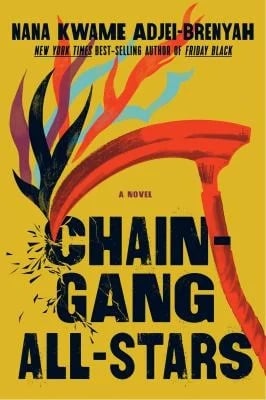
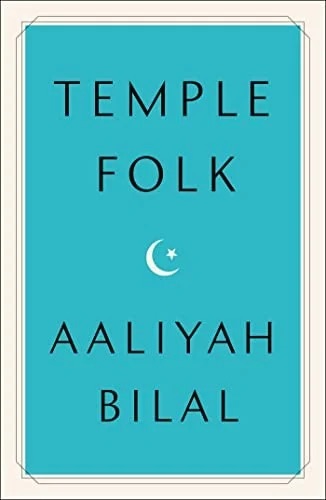

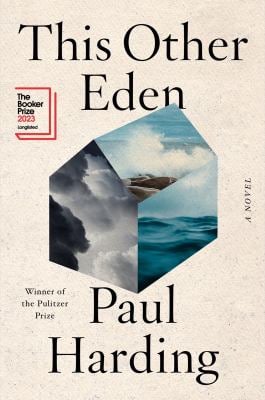
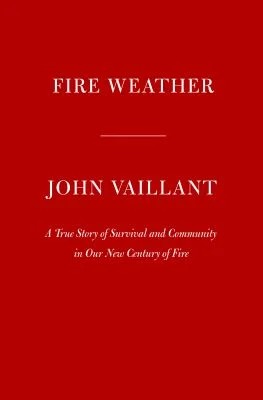
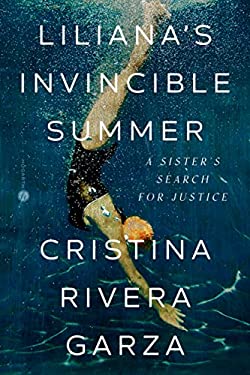
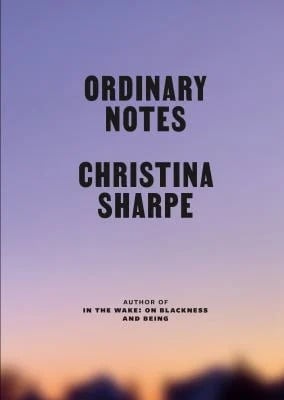
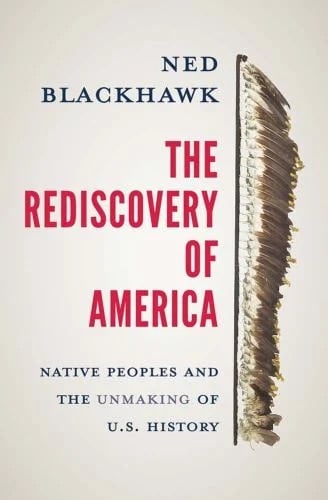
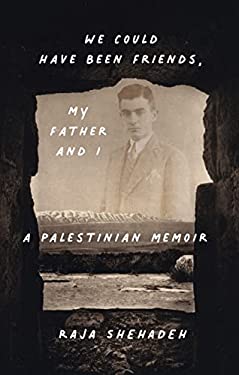

![From Unincorporated Territory [åmot]
by Craig Santos Perez](https://blog.betterworldbooks.com/wp-content/uploads/sites/5/2023/11/From-Unincorporated-Territory-amot-.jpeg)

